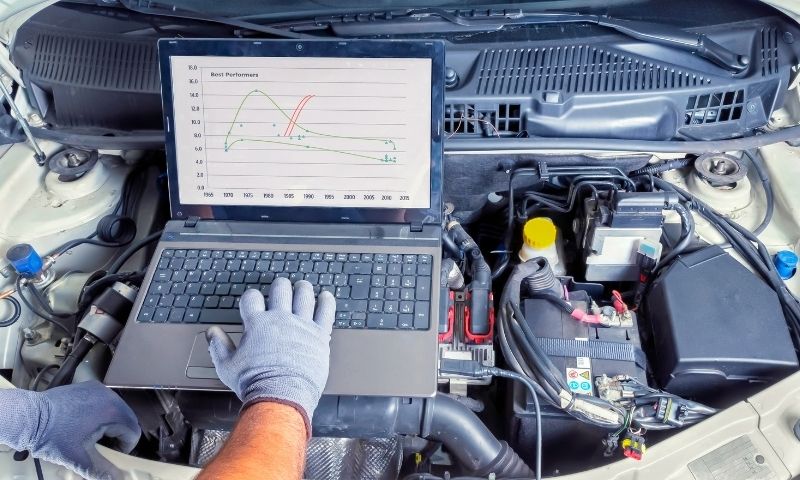A Leading Resource Built By Automotive Lovers, For Automotive Lovers.
We’ve helped consumers around the world make their purchasing decisions.
Latest Articles
Shaking a lead-acid battery can create dangerous hydrogen and oxygen gas mixtures. This action may dislodge sulfation but does not help the battery last longer. It also poses safety risks,… Shooting a lithium-ion battery can cause serious issues. A bullet may puncture the battery, leading to a short circuit. This short circuit generates excessive heat. The heat can increase the… Discharging a lead acid battery below the manufacturer’s specifications can cause permanent damage. This condition leads to sulfation, which affects charging. Extended discharges result in capacity loss and gassing. Using… Connecting a battery pack to itself can cause a short circuit. This leads to voltage conversion losses, reducing charging efficiency. The battery may overheat or leak. Without safety mechanisms, it… Using a higher voltage laptop battery can increase capacity, but it may damage the laptop’s circuitry and shorten battery lifespan. For example, charging a lithium-ion (Li-ion) battery above 4.2V can… Installing a car battery backwards can cause serious damage. Key components such as the alternator, PCM, and fuses may fail. This issue can lead to short circuits, resulting in blown… If you ingest battery electrolyte, saliva causes a chemical reaction that can harm mouth and throat tissues. This may lead to severe pain, vomiting, and difficulty swallowing. The electrolyte’s corrosive… Dropping a lithium-ion battery can cause physical damage. This damage may lead to leakage, overheating, bulging, or a fire hazard. Check the battery for deformation or heat. If you notice… Swallowing a lithium-ion battery can cause serious injury. The battery may get stuck in the throat or esophagus. This can create an electric current and cause burns and tissue damage…. Lithium-ion (Li-ion) batteries should never be thrown in the trash. They can catch fire during transport or at landfills. Instead, recycle them at designated centers or hazardous waste drop-off sites…. Not venting a battery allows hydrogen gas to build up. This gas is toxic and flammable, increasing explosion risks in enclosed spaces. Proper venting lets gas escape, preventing hazards. Sealed… Bending a lithium-ion battery can damage the active material and separator. This damage may lead to capacity loss and cell failure. Severe bends increase the risks of battery swelling, internal… When you double the plate separation of a disconnected parallel-plate capacitor, the capacitance is halved. The stored charge remains constant, but the voltage increases because of the formula Q =… Placing magnets in a battery pack does not create electric current, so the batteries remain unchanged. However, strong neodymium magnets can puncture lithium batteries. Magnets do not impact the self-discharge… Licking a lithium-ion battery can create an electric current. Saliva may cause harmful chemical reactions, leading to severe burns in the esophagus or nerve damage. Ingesting a button battery can… When a lithium-ion polymer battery gets wet, water can cause short circuits and overheating. These issues may lead to corrosion and electrolyte leakage, creating fire hazards. For safety, dry the… During a power outage, Nest Guard uses its backup battery. This battery lasts for up to 12 hours, keeping the system functional. Users need to unregister devices and unplug the… If your battery vent cap comes off, it signals a problem. This could be due to venting issues or overcharging. Check the battery hold down for stability. An excessive electrolyte… Overcharging a lithium-ion battery causes overheating and can lead to permanent damage. It increases internal pressure, risking thermal runaway, fires, or explosions. Overcharging also decreases discharge capacity and cell lifetime… If the terminals of a lead acid battery touch, it can cause a short circuit. This short circuit increases electric charge flow, leading to overheating or even explosion. There is… Fully discharging a lithium-ion battery can cause capacity loss and damage. When the voltage falls below 3.0V, internal chemicals degrade, hurting performance. To prevent this, avoid deep discharges. Use a… Installing a car battery incorrectly can reduce its lifespan and damage parts. Reversed terminals may lead to system failure. This can harm the alternator, powertrain control module, and blow fuses…. Inhalation of lead-acid battery fumes can damage the respiratory system and may lead to death in high concentrations. Excessive lead exposure can cause serious health issues, including brain damage. Over-charging… Low electrolyte levels in a battery can decrease its power generation. This happens because chemical reactions slow down, limiting ion movement. Common symptoms are muscle weakness, cramps, overheating, and reduced… Low fluid levels in a lead-acid battery expose the battery plates, causing corrosion and overheating. This reduces voltage and can harm the battery. Regularly check the fluid level and add… Without proper venting, hydrogen gas can build up in batteries, causing pressure. This can lead to thermal runaway and increase the explosion risk. In enclosed areas, flammable gases can create… Low electrolyte levels damage battery plates and cause sulfation. This reduces battery performance and capacity, leading to less engine power. It also increases corrosion of battery terminals and may cause… If a motorcycle battery vent tube isn’t connected, gases like hydrogen can collect inside. This accumulation poses a fire hazard and increases the risk of battery damage or explosion. Proper… Installing a battery backwards can blow fuses and damage the alternator along with other electrical systems. Safety systems usually prevent severe damage by blowing a main fuse or activating relays…. If a lithium-ion battery leaks, it can damage devices with corrosive electrolytes. This leakage can lead to fire hazards and health risks, such as skin irritation. Watch for signs like…Shaking a Lead Acid Battery: Safety Risks, Effects, and Maintenance Tips
Shooting a Lithium-Ion Battery: Explosive Effects, Safety Concerns, and Videos
Over Discharging a Lead Acid Battery: Risks, Damage, and Recovery Tips
What Happens If You Plug a Battery Pack into Itself? Shocking Results Explained
Higher Voltage Laptop Battery: Risks, Effects, and Charger Compatibility Explained
Installing a Battery Backwards: Risks, Consequences, and Troubleshooting Tips
Battery Electrolyte Ingestion: Symptoms, Dangers, and Treatment Options Explained
What Happens If You Drop a Lithium-Ion Battery? Safety Risks and Damage Insights
What Happens If You Eat a Lithium-Ion Battery: Dangers and Emergency Response
Lithium Battery Disposal: What Happens if You Throw Them in the Trash?
What Happens If You Don’t Vent a Battery: Safety Risks and Performance Issues
Bending a Lithium Ion Battery: Risks, Safety Concerns, and Damage Assessment
Doubling Plate Separation: What Happens to a Battery Disconnected Capacitor?
Magnets in Battery Packs: Risks, Effects, and Performance Explained
Licking a Lithium-Ion Battery: Dangers, Risks, and Safety Tips for Prevention
What Happens If My Lithium-Ion Polymer Battery Gets Wet: Risks and Precautions
What Happens if Nest Guard Uses the Backup Battery During a Power Outage?
What Happens If My Battery Vent Cap Comes Off? Risks, Maintenance, and Safety Tips
What Happens If Lithium-Ion Battery Is Overcharged: Risks, Effects, and Safety Guidelines
What Happens If Lead Acid Battery Leads Touch: Safety Risks and Precautions
What Happens If a Lithium Battery Gets Fully Discharged: Effects on Lifespan and Health
What Happens If You Install a Battery Wrong: Risks of Backwards Connections and Damage
What Happens If Lead Acid Battery Fails: Safety Precautions and Consequences
What Happens If Electrolytes Are Low in Battery: Symptoms, Causes, and Solutions
What Happens If Fluid Level Too Low in Lead Acid Battery: Symptoms and Solutions
What Happens If Battery Isn’t Vented Properly? Safety Risks and Venting Necessity
What Happens If Electrolyte Is Low in Battery: Symptoms, Effects, and Solutions
Motorcycle Battery Vent Tube Connection Issues: Risks and Solutions Explained
What Happens If a Battery Is Installed Backwards: Consequences and Troubleshooting Tips
Lithium Ion Battery Leakage: Causes, Risks, Prevention, and What to Do



